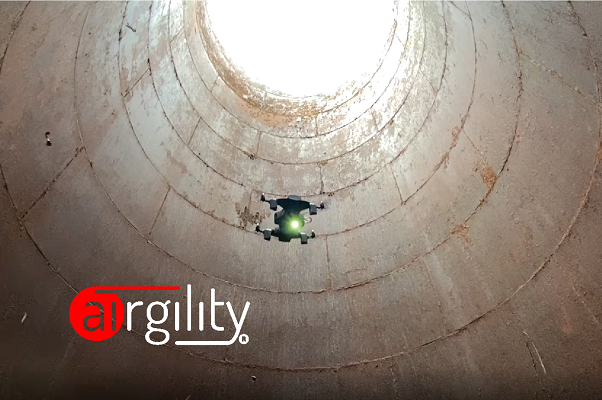
Unmanned Aerial Vehicles for specialized applications
The aerial robotics industry is highly innovative with constant application specific developments. Airgility is one such disruptive innovator with several mission specific drones in their portfolio that can take care of inspection activities that are far too dangerous for humans.
Evandro Valente: Airgility
In this article of our series, we are featuring Airgility Inc., a venture based out of College Park MD – USA. They are operating in the aerial robotics domain and are looking to disrupt the drone industry by implementing on-board mission and navigation specific decision-making. The main value proposition of Airgility’s offering is designing and manufacturing intelligent aerial systems that can navigate through GPS-denied areas that are inaccessible, confined, or too dangerous for humans.
How it all started
The idea behind Airgility was conceptualized in 2006 at the University of Maryland by Evandro Valente. The initial idea of the drones developed by Airgility was inspired by a NASA experimental aircraft called the Vought V-173 'Flying Pancake'. However, in reviving this concept, Evandro would re-invent the flying pancake with the ability to take off and land without a runway. During Airgility’s evolution as a startup, they evolved from an aerial platform innovator to an end-to-end aerial robotics solution provider leveraging on-board flight autonomy and AI.
"The core operating idea of our drones is to be able to fly indoors or in confined spaces without having to rely on GPS to navigate. The navigation is highly autonomous, leveraging traditional and AI-based algorithms that allow for minimal piloting skills and training.," explained Evandro. Airgility drones rely on multiple sensors to perceive its environment while interconnecting numerous algorithms, enabling them to make decisions with regards to the mission and its navigation path. The operational autonomy in the drones is driven by sensor and algorithm fusion.
3D printing is key
"The design of drones must be upgraded consistently, which requires flexibility in manufacturing. Changes in the design can range from low to drastic. This flexibility is only offered by 3D printing. Furthermore, to adapt our drones for operation in different conditions or missions, it is important to keep iterating and upgrading our hardware. So, 3D printing is essential to stay on the top of the robotics world," Evandro said. The operational flexibility of the fleet is also facilitated by a modular approach. The drones designed by Evandro and his team have adopted a more sustainable approach by incorporating the option of retro fitting modules based on the requirement of the mission. This results in significant cost saving and minimizes waste generation.
The DS-1 Minotaur drone in their portfolio is affectionately called ‘cat-dog’ in the company because of its interchangeability and modularity. This modularity is enabled by the incorporation of a sensor module on one end and a computational module on the other end. Modularity in drones makes it quite easy for tailoring the function of the drones according to the customer needs.
Increased autonomy and interchangeability
"We have upgraded our products and achieved a higher level of modularity by making it easier to iterate on both side of the cat-dog drone (a.k.a. DS-1 Minotaur). With the new upgrades, we are also able to squeeze in sensors even on the computational end of the drone. That means we can modify sensors on our end as well as the customer’s end," explained Evandro. In order to function safely in high-risk environments, it is important to select materials that can survive in the long-term. The Airgility team believes that their product would be further optimized by incorporation of KyronMax® carbon-fiber in their drones.
